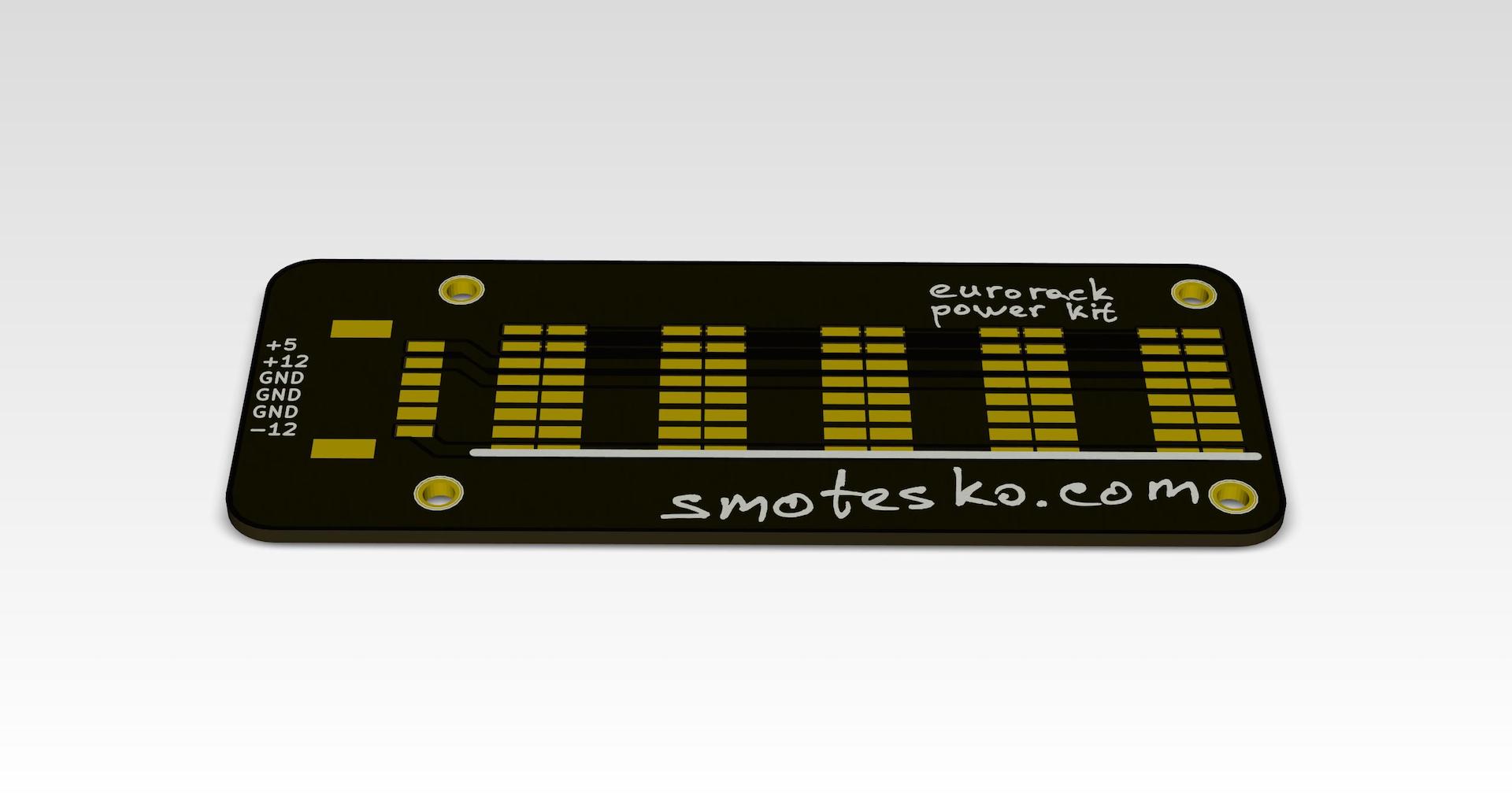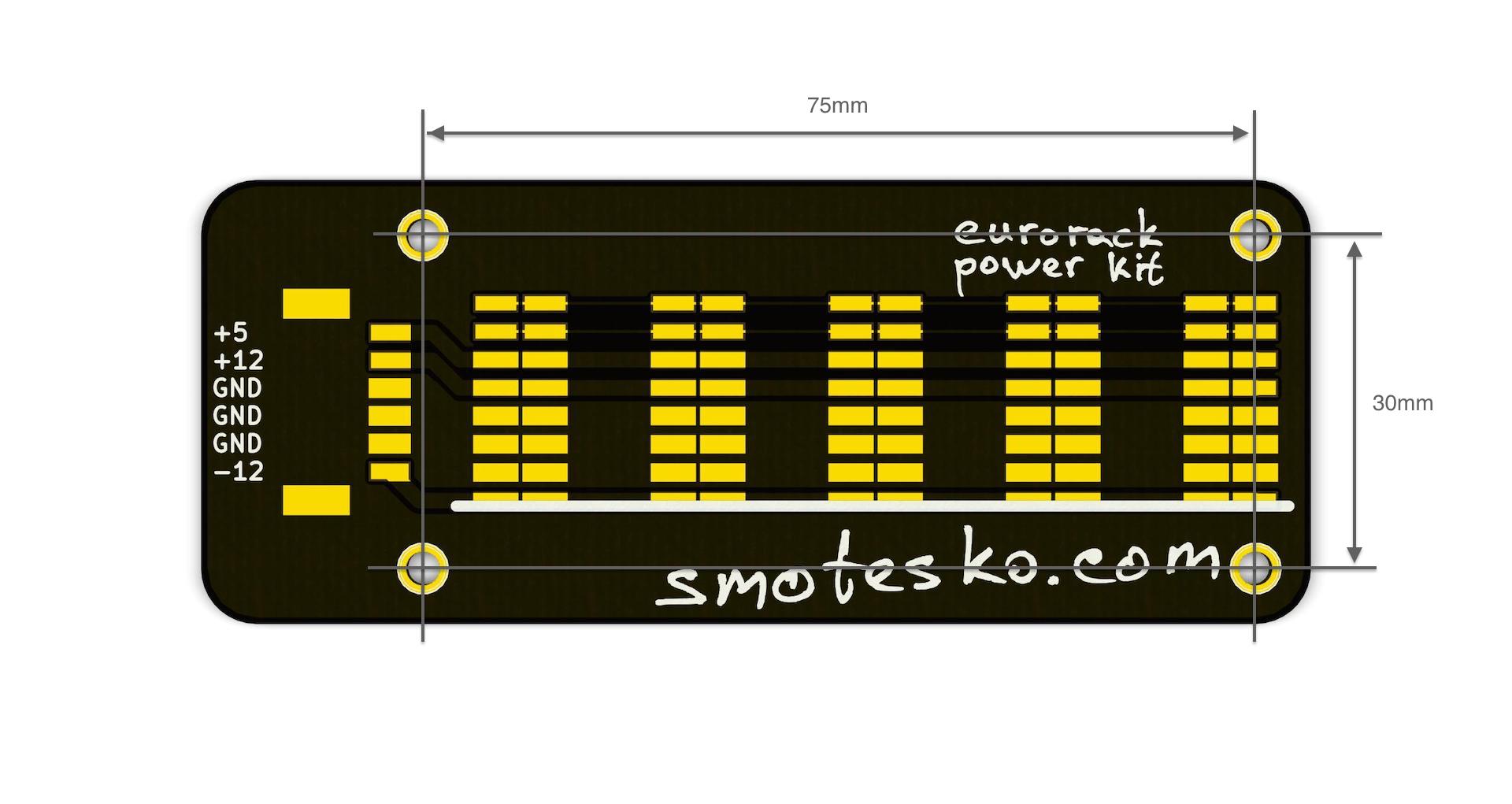 This power bus (part of my “eurorack power kit”) was designed to be used in a
single row case. I’m planning to
build a small Eurorack synth system, and decided to make my own power supply and
distribution.
This power bus (part of my “eurorack power kit”) was designed to be used in a
single row case. I’m planning to
build a small Eurorack synth system, and decided to make my own power supply and
distribution.
Most Chinese PCB fabrication services are very inexpensive if your board’s longest dimension fits within 100mm.1 This is the reason the power kit bus only fits 5 module connectors: the PCB fab will produce 10 boards anyway, so I can just install 2 or 3 of them in a single row case. With parallel connection to the power supply, it will even have lower electrical resistance (and hence, lower voltage drop).
Bus board is completely flat on the back side, so it can be installed in the case without drilling: just stick it with a 3M VHB adhesive tape or any appropriate glue. To achieve this, I’ve selected surface mounted connectors: the obvious Molex C-Grid 0.1” headers for connecting modules; and Phoenix PTSM terminal block for power input.
Meng Qi Flat Back Busboard inspired this project.

Four 3mm mounting holes are also provided, so it can be mounted with screws. It’s easy to use the board itself as a drilling template when making holes in the case back panel. The bolt holes are copper plated and electrically connected to GND wire. It is safe to install the bus board into metal Eurorack case because the chassis is supposed to be connected to GND.
Wires connecting this bus to the power supply should be solid copper with cross-section of 0.5mm² max (⌀ 0.8mm, 20 AWG), as required by PTSM terminal spec. It may be possible to use tinned stranded wire, but I wasn’t able to test it yet. Phoenix PTSM connector is push-in spring connection, so wire must be stiff enough to be pushed in without bending itself.
The C-Grid header is non-shrouded, in accordance to recommendation of mr. Doepfer to not use polarized headers on bus boards and modules. Silkscreen line across the bottom row of contacts marks the -12V power line. Remember: Red Stripe Down!
All images in this post were created in CAD, I wasn’t yet able to actually build this board and test it. Look for my future posts to see it built.
KiCAD source files are published in git repo.
-
It can be just $5 for 10 boards! ↩